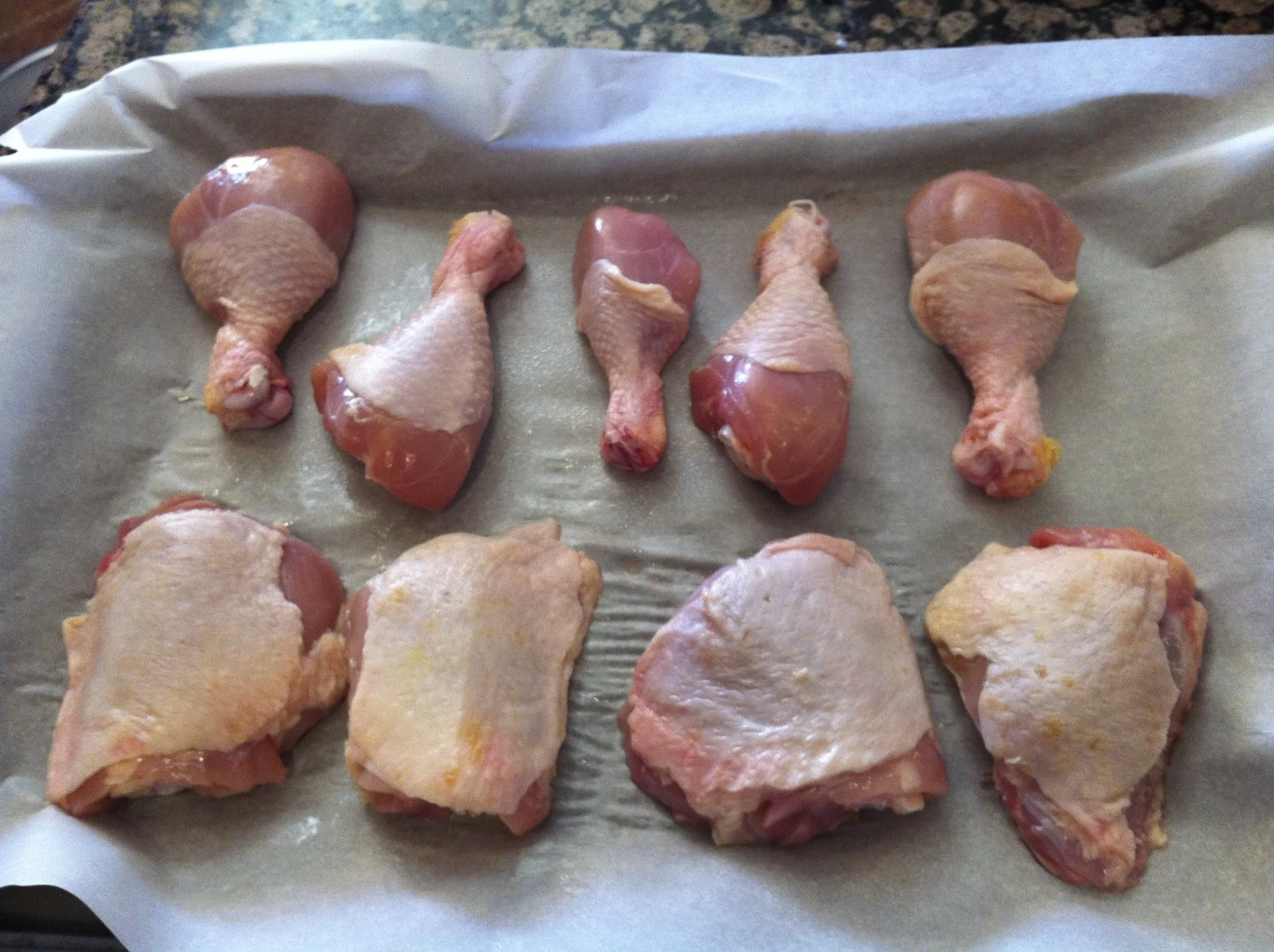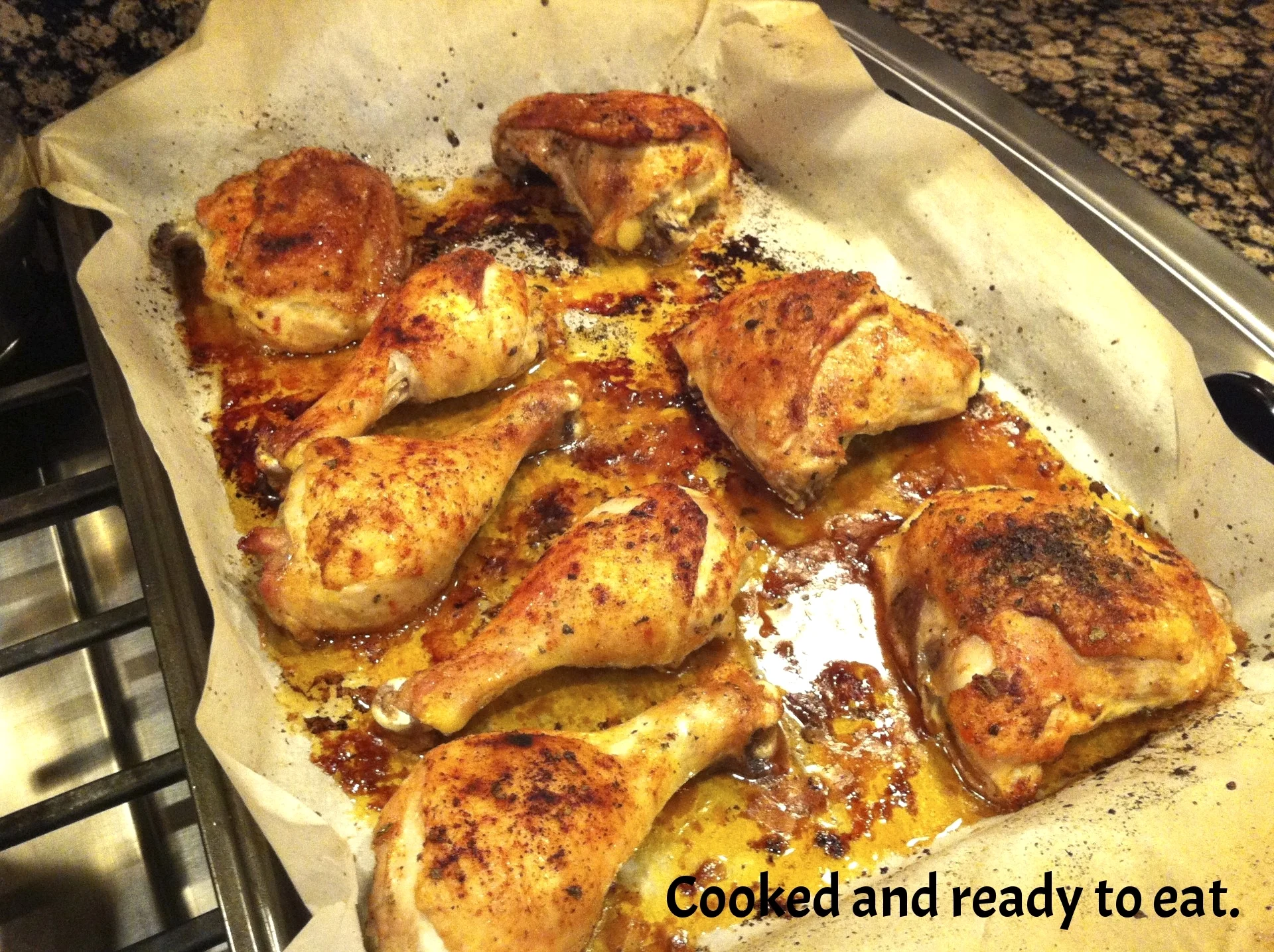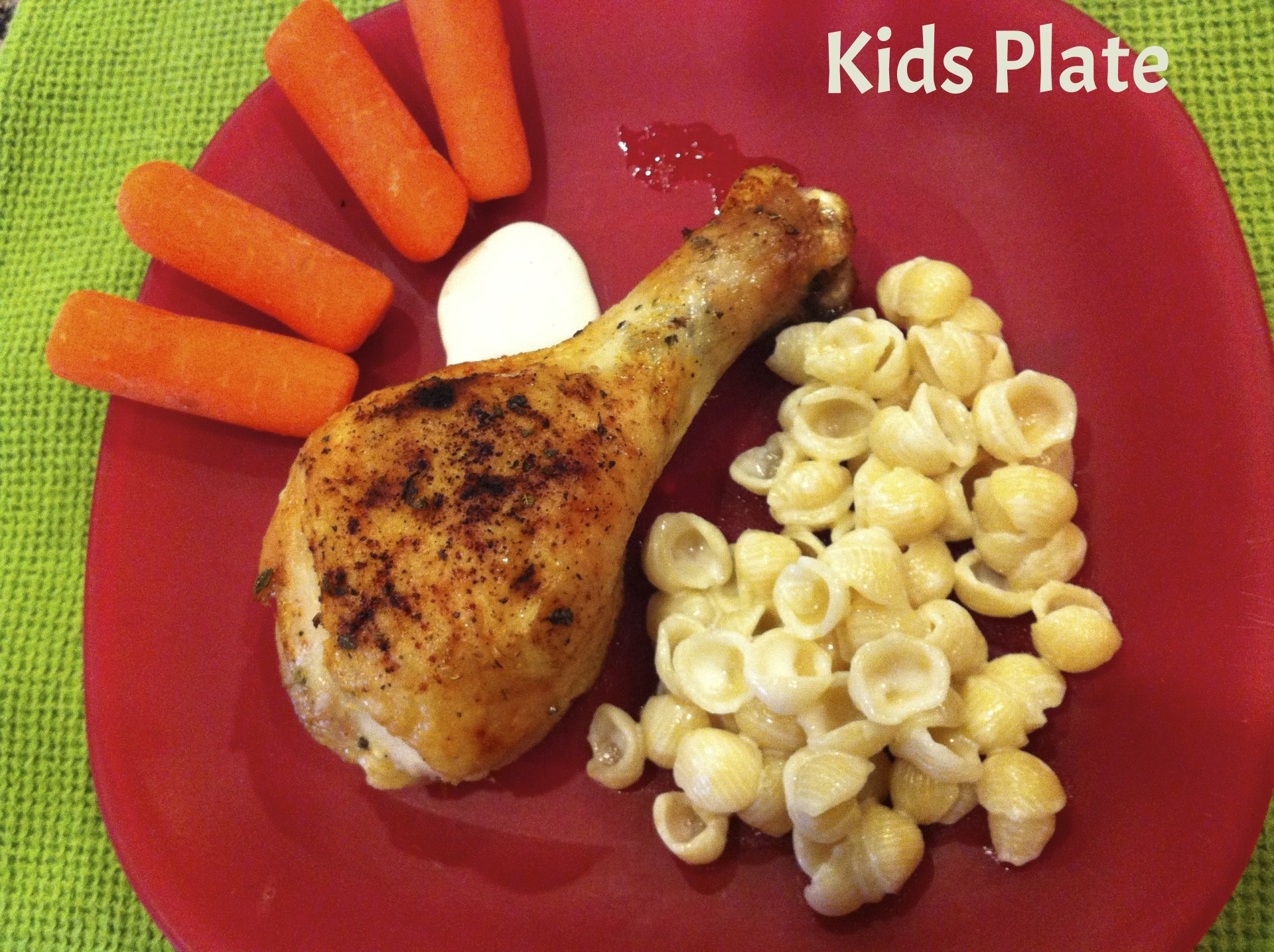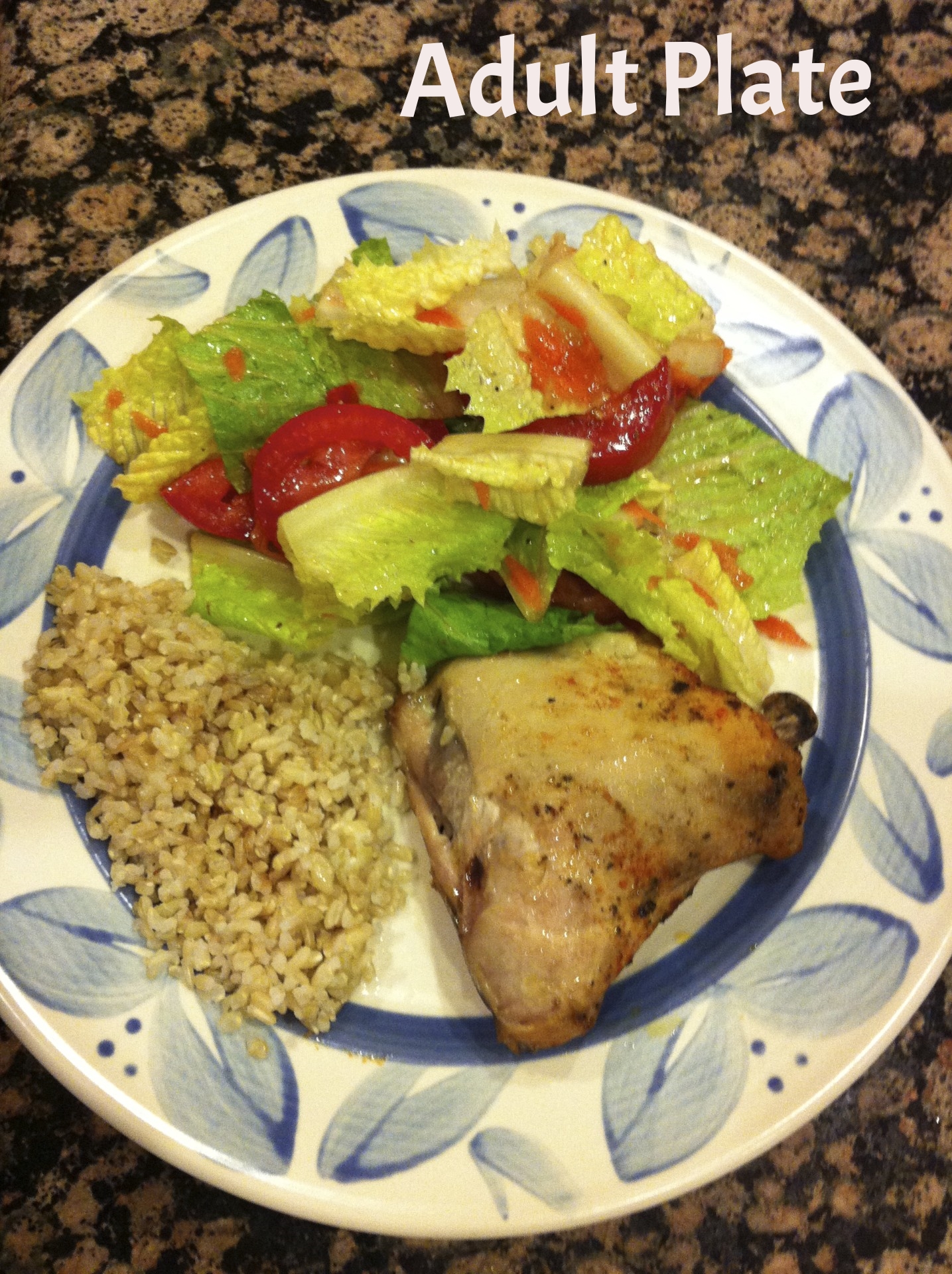Originally posted April 25,2012. Updated August 8, 2012. Revised May 2015.
I admit, when it comes to cooking, I’m a latecomer. I didn’t start cooking until I moved into my own apartment at the age of 21. Three years before that, I lived in a dorm with (what they called) a community kitchen: a dark, dreary room with a stove. Not inviting to a girl from a small town with zero cooking skills. Once I took my first nutrition class, I realized that eating fast food several times a week was not a wise decision and I wanted to learn how to cook healthy foods for myself. Once I had my own kitchen, I was ready to cook! The few scribbled recipes I had brought from home were soon replaced by phone calls to my mom who patiently took me step-by-step through the process of making dishes she knew by heart. By the end of our conversations, I had a piece of home in my own kitchen 70 miles away from the one I grew up in.
Now that I’m married and have a family, cooking from scratch is even more important to me, but it isn’t easy and I’m always looking for short cuts! The October 2011 issue of Everyday with Rachael Ray magazine featured recipes on batch cooking. Cook a month of meals in one day? I loved the concept! I was especially interested in the baked chicken recipe because making this would allow me to prepare enough chicken to freeze for future meals. Since developing this old-but-new-to-me skill of baking chicken, I put two varieties to the test: conventional (regular) and organic chicken. Although my review isn’t as extensive as the 2009 feature in the Los Angeles Times where they compared 14 varieties of chicken (organic, free-range, natural, air-chilled, heritage and kosher), this is my experience baking these two.
The Purchase. I bought a package of conventional leg quarters at 0.89 cents per pound for a total of $4.11. A major-deal for a meat purchase. Buying a “family pack” saves you money but you spend more time preparing it (cleaning, trimming and cutting the meat into drumsticks and thighs). When I purchased the organic chicken, the thighs and drumsticks came separately at an average price of $3.00 per pound. Major price difference, but much less time invested preparing it for the oven. The difference between conventional and organic, free range chicken is that USDA organic chickens are given feed free of hormones, antibiotics or animal by-products. Free-range means the birds can roam outside their coop in an outdoor space (although the amount of space isn’t specified) rather than being held in tiny pens. Considering all of this, the higher price tag makes more sense. For more information, Mayo Clinic’s website has an excellent summary about organic foods and USDA organic labeling standards.
The Prep. The first thing I did was pat the chicken with lots of clean paper towels and trim excess skin (fat) I knew we weren’t going to eat. [f you rinse chicken (which is NOT recommended for food safety reasons) be sure to snaitize your sink before and after doing so, otherwise you risk spreading harmful bacteria like salmonella in your kitchen.] This was messy and, well…gross. The skin from the regular chicken was sticky and thick; the organic meat had visibly less fat and the skin was thinner. Since we buy meat by the pound, it bugged me that even though the regular chicken cost less, I paid for about a pound of fat that went straight into the garbage. The organic chicken was leaner and there was significantly less fat to trim off; less waste and more consumable meat for my dollar.
Conventional Chicken Trimmings: About 1.5 cups of skin removed from the meat. The skin is where the majority of the fat lies in poultry, some of which is potential artery-clogging saturated fat. Less consumable product = more money in the garbage.
Conventional Chicken Trimmings: More waste.
Organic Chicken Trimmings: About 1/3 cup skin removed. This is 4 1/2 times less skin removed from the organic vs. conventional chicken. Less waste=more consumable product and less money in the garbage.
Organic Chicken Trimmings: Less waste.
Next, I cut the regular chicken into its separate pieces: drumsticks and thighs. If you have a weak stomach, this can put you over the edge because you have to find the joint between the two, break it and cut through it. (Again, the bargain at the checkout counter when purchasing meat this way means more work by you to prepare it.) An important point here is that when you go through this process, it grounds you to the fact that this is an animal you're eating. This chicken was a living being with bones and blood and organs. If preparing it grosses you out, maybe you should consider eating less or perhaps, not eating it at all. Admittedly, I was more disturbed by preparing the conventional chicken mainly because it didn't look as healthy of a product--meaning it may not have been a particularly healthy living animal before it was killed for food.
Conventional chicken cleaned and tripped. Big pieces, some discoloration at the stem of the drumsticks and edges of the thigh.
Organic chicken cleaned and trimmed. See any difference between the organic and conventional pieces? The organic pieces are smaller but have a brighter color and, to me, appeared to look like fresher, better quality meat.
Show and Tell. Although the pictures may not show it well, the difference in texture, color and fat content between the two types of chicken were clean to me. The organic chicken looked and felt like healthier meat. It had a brighter color and the flesh was plump and fresh. Even though the pieces of the organic meat were smaller compared to the conventional pieces... shouldn't they be? After all, how big should a chicken leg or breast really be? It made me wonder even more about how our farm animals are raised and what they're fed in order to produce more than what the average consumer wants. In general, most consumers want the most meat at the lowest price; to deliver this, animals are given medications and certain feed to make this happen. So, even though the organic pieces were similar, they came from an animal that was raised to be its natural, predetermined size.
Me and my girl cooking together. I squeeze the lemon juice while she brushes on some oil. Get kids involved in the kitchen and teach them skills they'll use for a lifetime.
Ready to Eat. I don’t have a picture of the organic baked chicken, but both versions looked about the same. Since the skin was thinner and there was less fat on the organic variety, you may want to cook it for a little less time (check at 25 minutes). When baked or grilled, leaner meats have a higher potential for cooking faster and drying out because less fat translates to meat that is typically less moist and juicy–fat retains this type of texture, hence most people’s preference for darker meats.
In the spirit of our new national food icon, MyPlate I’ve shown a few examples on how to apply this with our baked chicken. I have a picture of what I served my kids in the first shot (raw carrots with a tablespoon of ranch dressing, baked drumstick with shells and cheese) and a typical meal for me and my husband. Although my kids would eat the “adult version,” this shows a few different ways to serve it.
The Wrap-Up. Since this experiment, I am buying organic meats almost exclusively. I feel it is a better investment for my dollar with regard to the quality of the foods I am purchasing, particularly when it comes to meats. If these chickens were able to move more and were fed well while they were alive, the meat on their bones looks and tastes fresher by the time it makes it to my plate. The smaller pieces of meat work in our favor because this leaves more space on our plates for plant-based foods like fruit and vegetables--foods my family and I will always benefit from eating more of. Ultimately, the choice is ours. Most major grocery stores carry both organic and conventional chicken and no matter what you go with, baking is a great way to prepare a bulk amount and use in several meals throughout your week.
~CWN









